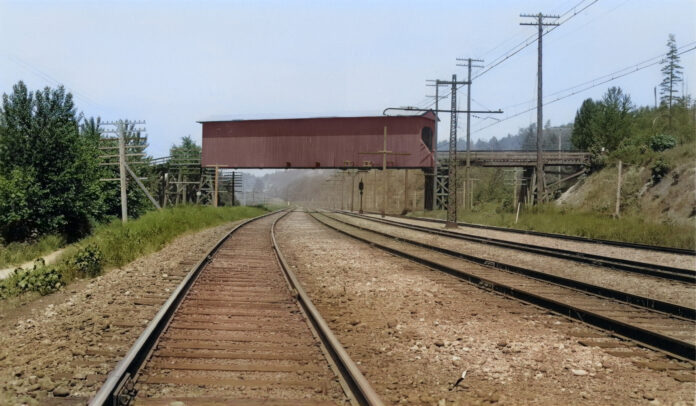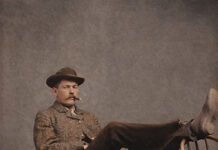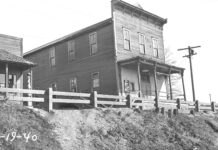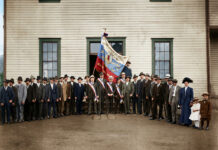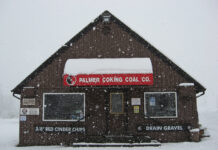Covered bridges were once common throughout the United States, but more prevalent in the Midwest and New England. America’s first covered bridge crossed the Schuylkill River at Philadelphia in 1806. At their peak, there may have been 14,000 throughout the country, but today only about 700 survive in 29 states. Pennsylvania has the most – 209 bridges in 34 of its 67 counties. In Washington state only five authentic covered bridges remain. The Allentown Bridge crossing over railroad tracks as seen in this 1932 photo by Thomas P. Blum isn’t one of them. It burned to the ground in 1958.
Roofs were typically designed to protect wooden bridges from constant exposure to sun, snow, and rain. Without a cover to protect the structure a wooden bridge might last only 20 years. But by covering a bridge its life can be extended to a century or more. Washington State had fewer covered bridges than most likely because our climate doesn’t typically see large snow accumulations. Plus, with our massive forest resources rebuilding a wooden bridge was less expensive. As steel and reinforced concrete began replacing wood in bridge construction, the need for covers collapsed.
The Allentown Covered Bridge was erected circa 1903 when the Union Pacific Railroad built it as a crossing for wagons and the few gas-powered vehicles then present. It was also called the Steel Hill Bridge and was located where South 129th Street now crosses over both Interstate 5 and the tracks of Burlington Northern and Union Pacific railroads. The original bridge was 120 feet long, but the roof covered less than half of that. The bridge floor was constructed of 8” x 18” floor beams overlain by diagonal 5” planking. The interior dimensions were 16 feet wide and 13 feet high.
During the 1920s, as many as 200 trains operated by Northern Pacific, Union Pacific, and Pacific Coast Railroads passed under the bridge each day. Most of them were steam engines fired by coal. The soot and clinkers that spewed from the locomotive’s smokestack presented a danger to motorists and the wood planking. Several times fires broke out from sparks belched from the smokestacks, so in the early days, the bridge had water barrels to fight potential blazes.
Today’s overpass, also known as the Archie Codiga Bridge, is 930 feet in length. Attilio ‘Archie’ Codiga (1886-1952) was a Swiss-Italian immigrant farmer who started a dairy farm along the Duwamish River in 1908. His fields where cows once roamed are now rail yards and distribution centers sandwiched between Boeing Field to the north and the Foster Golf Links to the south. Yet a forested 6.5-acre patch of green called Codiga Park still occupies the east bank of the river.
The neighborhoods of Allentown and Duwamish were annexed into Tukwila in 1989. The enclave was named for Joseph Allen, a British settler who arrived in the Pacific Northwest in 1879 and purchased, then subdivided the land. The Duwamish tribe of Native Americans traditionally lived along the Duwamish River and related waters of the Cedar and Green Rivers. The Duwamish River is called the Green River upstream of Tukwila. Duwamish means “people of the inside” referring to the area around Seattle’s Elliot Bay and Lake Washington.
This photo number S0474-C14-Bridge3174, dated June 8, 1932 by T.P. Blum comes courtesy of the King County Archives with colorization by Doug “Boomer” Burnham, a Tahoma photo instructor doing business as www.boomersphotography.com/ Next week, more about the Allentown Covered Bridge and what it looked like in 1951.

